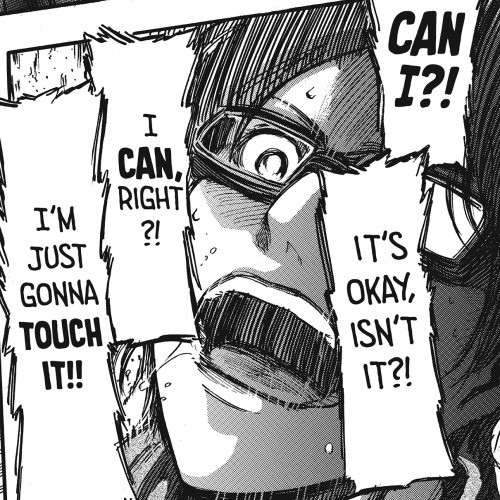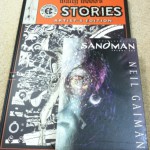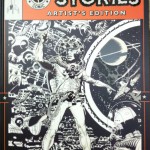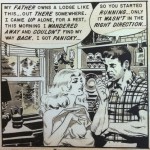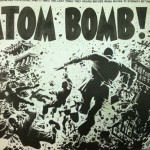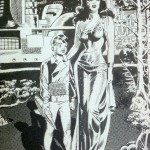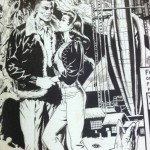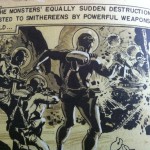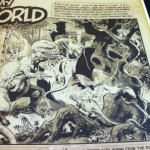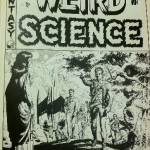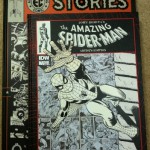My copy of Dune is a hardcover. It’s the first three books collected in one, and like all books that get talked about on this blog, this massive tome has a story behind it.
It was on display at Modern Book Depot, Guwahati, for as long as I could remember. Modern Book Depot was a place where popular books went not exactly to die, but to hibernate. The place smelled a little damp, if memory serves me correctly, and there was a sort of moldy feel towards the back of the shop, where the sun never shone, and piles of books lay unsold. This was one of the few bookstores that refused to add on the 10% discount that came as a godsend during the Annual Guwahati Book Fair. Sure, a part of the collection would get the discount, but those would be the dregs of literature, the John Grishams and the Robin Cooks, the Dick Francis and the who-ever-buys-this-shit copies of some random book. The ones you really wanted to buy would get a measly 5 percent, and no self-respecting book buyer would fall for that.
So, this copy of the Dune trilogy was on sale for 300 Rupees, for the longest period of time. I remembered seeing it when I was in school. In 2001, that sum of money went a long fucking way, especially for a guy who never bought first-hand books. 300 rupees was at least ten books, not three. So while I drooled over it, I never bought it. Someone bought that book for me. Two someones, both of them college seniors. Carthik was one of them, he was traveling to Guwahati that year to get acquainted with his future in-laws travel through Assam. Udatta was the other. Both of them figured that I was too much of a cheapskate to buy the book, and both of them wanted to read it too, so it turned up one morning on my table. With personalized inscriptions inside. At that time, I hated inscriptions in my books, but this one was special. Specifically what Udatta wrote. “Dear Evil Guy,” the inscription read. “Please do not sell this book.”
The reason behind this deserves a flashback-within-a-flashback, so here goes.
The year I joined college was also the year everybody seemed to figure out that owning a personal computer was the coolest thing to do on campus. Look at statistics – when we joined, our senior year had two students who owned computers on campus (one of them happened to be the illustrious Palaka Sasidhar, who then became tech advisor for everybody on campus, including college professors, and made use of his enhanced accessibility to the 64 Kbps college internet connection to download the complete Calvin and Hobbes from a pirated site, causing everyone’s emails to be backlogged for about a week as 150 MB of gifs downloaded at a glacial rate). By the time our ragging was over and the last remnants of the fresher parties had been up-chucked around the lawn, there were almost 30 people on campus with their own computers and that number increased every week. (All numbers, obviously, are pulled out of my Memory Hat. But then, it’s the spirit that counts, so bear with me, please) It got to the point where even I contemplated getting one – though the thought of spending 30,000 Rs or so on something made me feel light-headed and weak-boweled. (I hate to think what 1998-version of me will think of the art collecting bug that’s infected me, post-2005) (I did buy mine a year later, with some scholarship money)
One evening, after dinner was over, I was sitting around in my room when Udatta sauntered in, smoking a cigarette. Burugu Bhaskar, my room-mate was also inside. He was this nice, clean-cut local fellow who made sure to study after dinner, while I pored over my Stephen Kings, both of us humming along to whatever was playing on my modest tape-recorder. Probably Dil Se. I glanced at Burugu when Udatta got in, because we had exchanged words about Udatta a few days ago. Specifically, about his smoking in our room. “Hey, Chetri”, he said. “Your senior, man. Tell him to not smoke when he comes in, man.” “He is my senior”, I reparteed. “You tell him.” So when Udatta came in, Burugu and I looked at each other, and then he looked at Udatta and then he walked out of the room. Couldn’t blame him, because you didn’t really mess with the U-man and his considerable bulk even back then.
“Chetri”, Uddu began. Everybody called me Chetri back then. I hated it. “Chetri is my father’s name, goddamn it”, I would grumble. “My name’s Satyajit.” But nobody cared. I was doomed to be Chetri forever. “Chetri, what’s up?” He didn’t really say “what’s up?”, nobody did. What he really asked me was what the eff I was doing, spiced up with some choice words in Axomiya that we employed with each other, involving hair and bananas. Harmless good fun, except you had to remember not to use those words in front of your parents.
I said nothing was really up. At which Uddu asked me if I was interested in deflowering his computer. I was totally up for deflowering his computer.
Allow me to explain. The situation at this point was that you bought a computer, with the official excuse (to your parents) being that you needed it for your courses. But what really happened was that you used it for other stuff. Like renting VCDs and watching educational films. But mostly porn. And the first time you played a porn movie in your computer was when you “deflowered” it. Remember, this was the Pre-internet Age, still about a year away from when browsing would get pocket-friendly enough for us to be able to go someplace and surf the internet without blowing up a month’s allowance in one night. Porn VCDs were the only way this particular itch could be scratched. And if we were lucky, the VCD wouldn’t be scratched and we wouldn’t feel like we didn’t get our money’s worth. Obviously, nobody would really have the patience to watch the whole thing from beginning to end, but still. Uddu’s computer had come in about a week ago, and the most he had done with it was to install a bunch of shareware from Chip magazine CDs and pretend like he was having fun. Chip magazine CDs were our default source of fun those days.
We deflowered Uddu’s computer, and it cost a grand total of 23 Rs. This included auto fares of 4 Rs per person, one way, and a 15 Rs charge for the VCD. We split the money. We were happy. I bet the computer was pretty happy too. And then Uddu handed over the VCD to me and said I could go return it the next day. I would have, I totally would have, except –
I went back to my room and asked Burugu, back at his desk and intently going through his Engineering physics homework, if he wanted to watch a porn movie. He blushed, and nodded vigorously. I asked him if he knew of any friends who might want to watch a porn movie. Of course he did. I then went to visit my classmate from Goa, the first guy in our batch to own a computer of his own, bought two days after his fresher’s party. Goa always had the first fresher’s party because there was only one guy from the state, and said junior would bond with his senior the first day and both of them would declare each other cool enough to bestow the honor of being welcomed into the college fraternity without posturing and macho rituals that plagued the rest of us. Of course he was okay with us using his computer, provided he got to see it for free. He was the only one that did not need to pay for it – I charged everyone 4 Rs each, for the viewing. The room was filled with everyone from the block, about 20-odd people. Everyone was happy. With eighty rupees in my pocket, I was pretty darn happy too.
Udatta came to know about my profit-making venture a few weeks later. He tried to demand a cut, but by then, the money had been disposed of. I did tell him he was my favorite senior, and that I would let him read any of my books any time, which mollified him a bit. But I could no longer talk him into any joint financial venture without him trying to figure out exactly how I will undercut him and make a profit, and therefore, the inscription on the copy of Dune. “Please do not sell this book.”
I didn’t.
